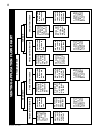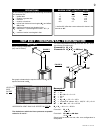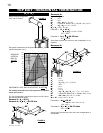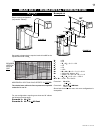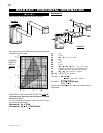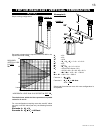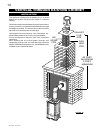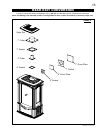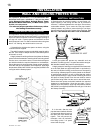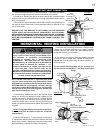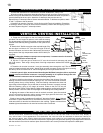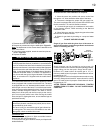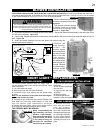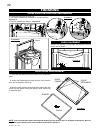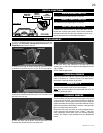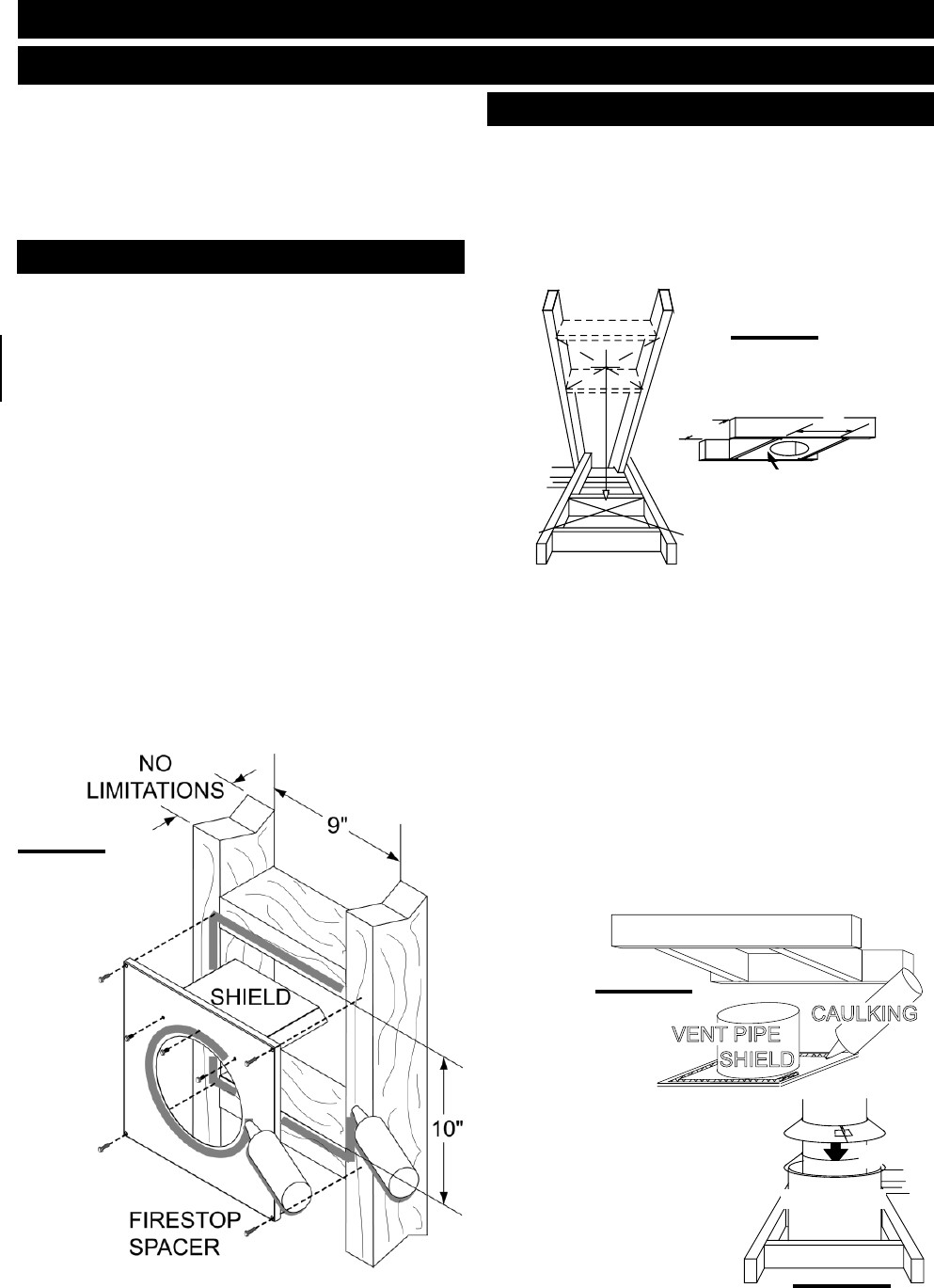
16
W415-0607 / A / 01.18.08
1. Determine the air terminal location, cut and frame a 9"
square opening in the ceiling and the roof to provide the
minimum 1" clearance between the vent pipe / liner and any
combustible material. Try to center the vent pipe location
midway between two joists to prevent having to cut them.
Use a plumb bob to line up the center of the openings. DO
NOT FILL THIS SPACE WITH ANY TYPE OF MATERIAL.
A vent pipe shield will prevent any materials such as
insulation, from fi lling up the 1" air space around the vent pipe.
Nail headers between the joists for extra support.
2. Apply a bead of caulking (not supplied) to the framework
or to the Wolf Steel vent pipe shield plate or equivalent (in
the case of a fi nished ceiling), and secure over the opening
in the ceiling. A fi restop spacer must be placed on the bottom
of each framed opening in a roof or ceiling that the venting
system passes through. Apply a bead of caulking all around
and place a fi restop spacer over the vent shield to restrict
cold air from being drawn into the room or around the stove.
Ensure that both spacer and shield maintain the required
clearance to combustibles. Once the vent pipe / liner is
installed in its fi nal position, apply high temperature sealant
W573-0002 (not supplied) between the vent pipe / liner and
the fi restop assembly.
HORIZONTAL INSTALLATION
VERTICAL INSTALLATION
INSTALLATION
WALL AND CEILING PROTECTION
FIGURE 20
FIGURE 22a
FIGURE 21
FIRESTOP
UNDERSIDE OF JOIST
9 ”
9”
VENT PIPE
SHIELD
CAULKING
This application occurs when venting through an exterior wall.
Having determined the air terminal location, cut and frame a
hole in an exterior wall with a minimum rectangle opening of
10" high x 9" wide. Firestop spacer and shield do not limit
the thickness of a wall. For wall construction when using less
than 2" x 6" framing, the shield must be cut to suit.
1. Assemble the shield to the spacer as shown, using the
3 shorter screws supplied.
The shield is meant to protect combustible materials within
the wall. If the shield is deeper than the combustible portion
of the wall, cut to fi t.
2. Apply a bead of caulking all around and place the fi restop
spacer over the framework to restrict cold air from being drawn
into the room or around the stove. Ensure that both spacer
and shield maintain the required clearance to combustibles.
Secure the spacer in place using the 4 longer screws supplied.
Once the vent pipe is installed in its fi nal position, apply high
temperature sealant W573-0002 (not supplied) between the
vent pipe and the fi restop spacer.
3. In the attic, after the vent
pipe has been installed, slide the
vent pipe collar down to cover up
the open end of the shield and
tighten. This will prevent any
materials, such as insulation,
from fi lling up the 1" air space
around the vent pipe.
SHIELD
VENT
PIPE
COLLAR
VENT PIPE
FIGURE 22b
For optimum performance, it is recommended that
horizontal runs have a minimum 1" rise per foot when
using Simpson Dura-Vent, Selkirk Direct Temp,
American Metal Amerivent, or Wolf Steel rigid or
fl exible vent components.
For safe and proper operation of the stove, follow
the venting instructions exactly.



